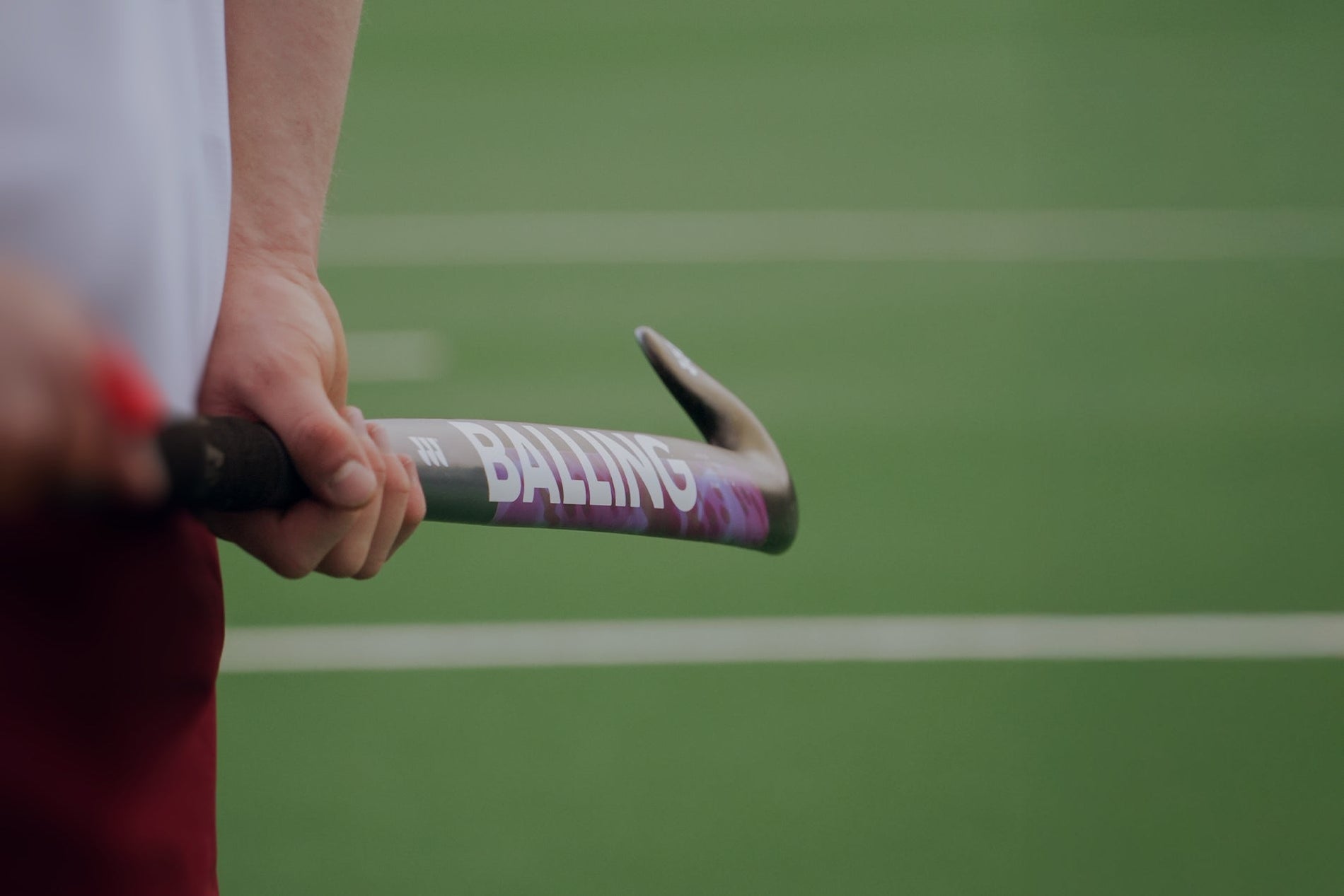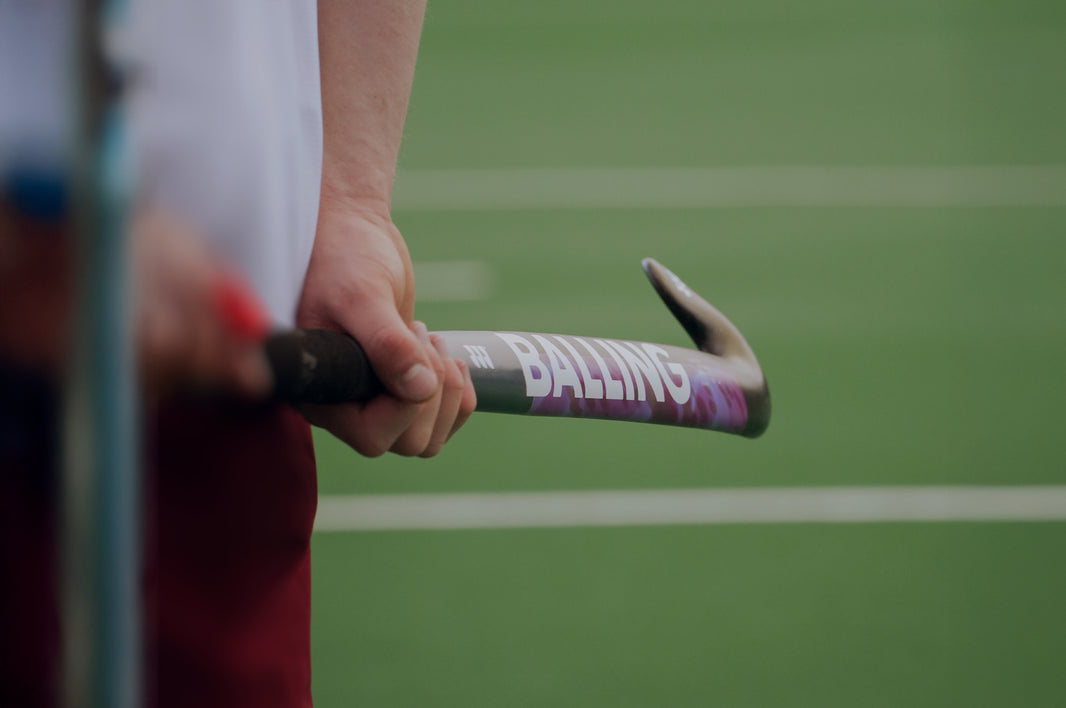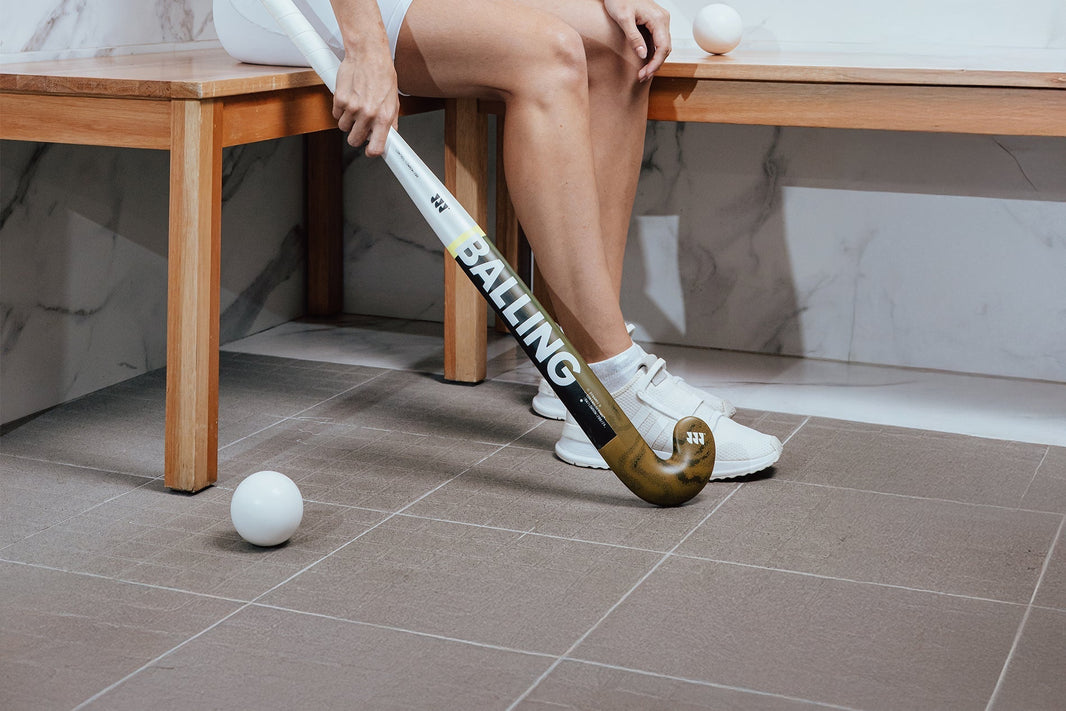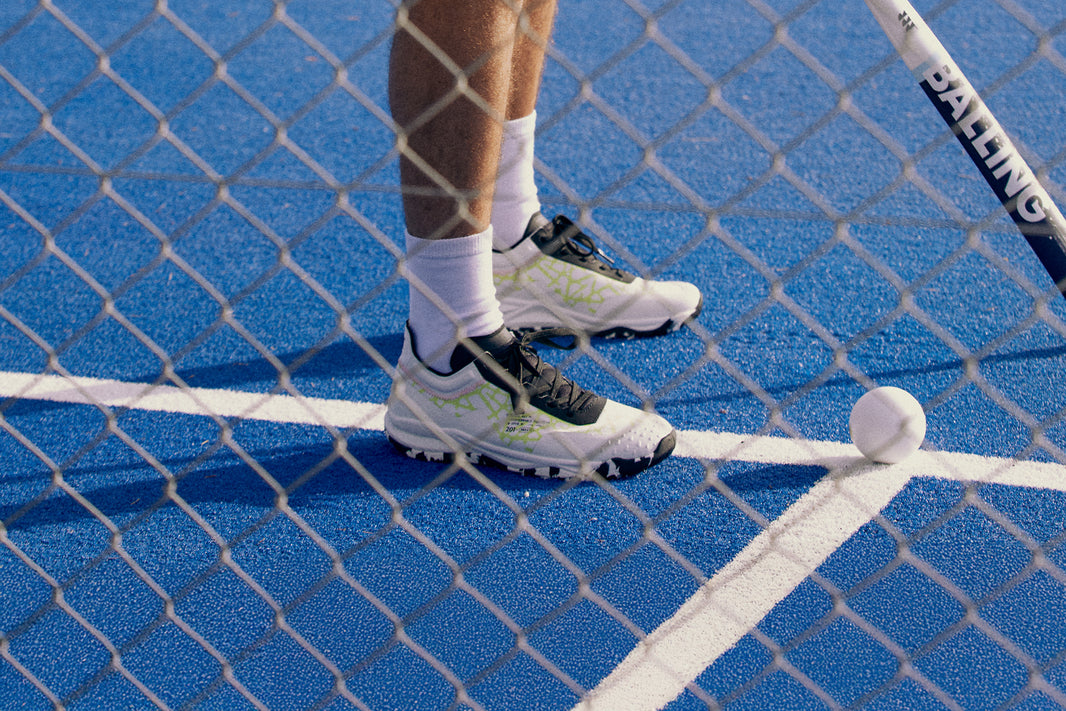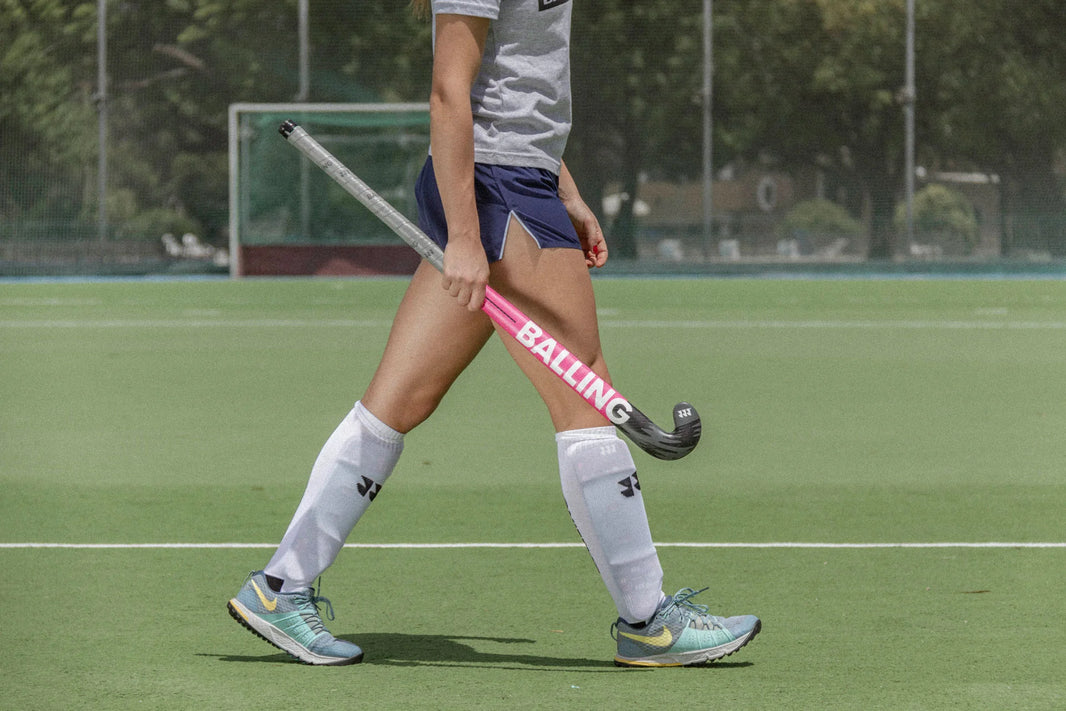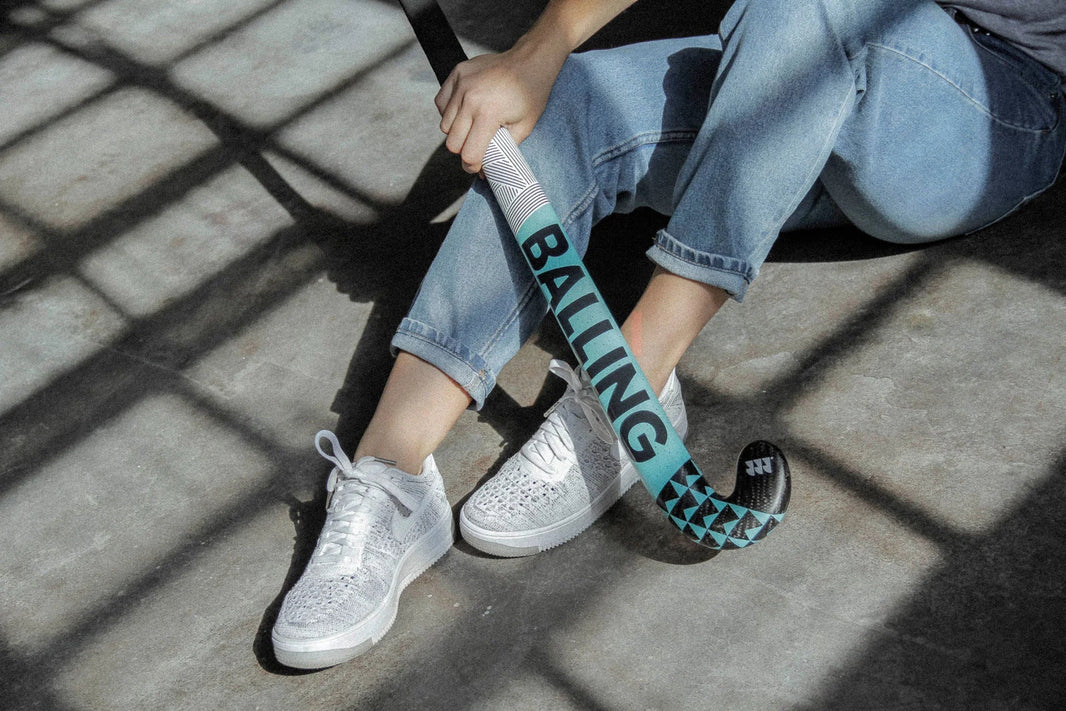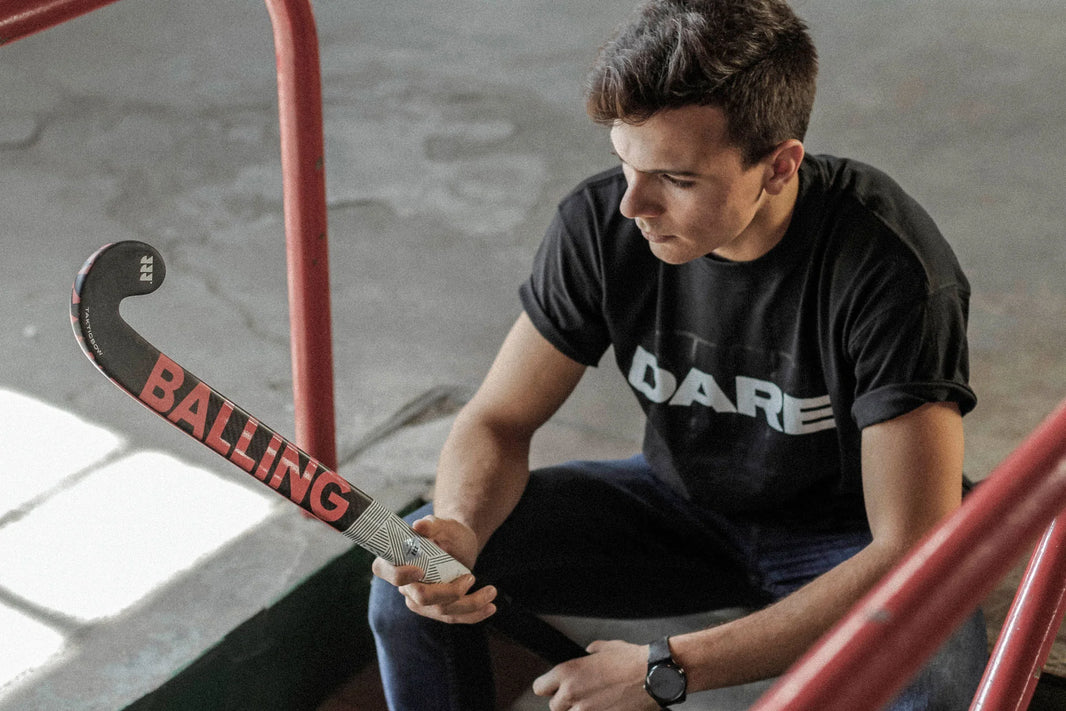Making mistakes when starting out in field hockey is part of the process. But some mistakes are so common—and so easy to correct—that it's worth knowing about them from the outset. If you're taking your first steps on the field, this article is for you.
Without further ado, here are the five most common mistakes and how you can avoid them right from the start.
1. Holding the stick incorrectly
One of the most common mistakes among beginners is holding the stick as if it were a tennis racket. This limits your control and makes your movements clumsy and imprecise.
When you hold the stick incorrectly, everything else fails: your passes go wrong, your control is weak, and your movements become rigid. It also increases the risk of injury due to unnecessary strain on your wrist and shoulder.
How to correct it?
- Left hand up, firm but flexible: this is the guiding hand.
- Right hand lower, relaxed, ready to release in wide movements.
- Practise moving the stick in a figure of eight on the ground, feeling how it responds to your wrist, not just your arm.
2. Playing too upright
A posture that is too upright reduces your balance, vision and reaction speed. Field hockey is played in a crouched position, with bent knees and a low centre of gravity.
When playing upright, it takes longer to react to your opponent's movements and it is harder to maintain control of the ball. You also lose accuracy when passing or hitting.
Quick tip:
Imagine you are peering through a keyhole. That is roughly the height you should maintain for most of the game. Your back does not need to be straight, but it does need to be active. Stay relaxed, but ready to respond.
3. Looking at the ground all the time
It's normal at first: you want to see where the ball is. But if you only look at the ground, you lose sight of the game, your teammates, and react too late. Learning to lift your head while dribbling changes the way you play.
How do you train?
- Do ball control exercises without looking (e.g., in a straight line with cones).
- Pass the ball between your feet while keeping your eyes on a fixed point or your surroundings.
- Play with a teammate in small spaces, trying to maintain eye contact.
Looking up is not just a technique: it's game vision. And that sets you apart.
4. Use only the flat side of the stick.
Many novice players avoid using the backhand because they find it uncomfortable. The problem is that you become predictable and limited. Modern hockey requires ambidexterity: backhand passes, blocks, quick breaks... it all adds up.
Start with simple exercises:
- Switch sides while driving the ball (even without pressure).
- Try pushing with the backhand on short passes, without looking for power.
- Play an entire game using only the backhand in defence. Yes, it's hard. But the result is freedom on the field.
It's not about the backhand being pretty. It's useful. And the sooner you integrate it, the better.
5. Not knowing the basic rules of the game.
It's not about memorising the entire rulebook in an afternoon, but rather understanding the basic things that are prohibited:
- Using your foot to stop or push the ball.
- Hitting with the round side of the stick.
- Obstructing your opponent without giving them space or the option to play fairly.
- Charging with your body (this isn't rugby).
Knowing the rules isn't just about avoiding penalties. It allows you to play more intelligently, anticipate your opponent and gain an advantage without committing fouls.
A good player isn't the one who does the most, but the one who knows what not to do.
Playing better starts with making fewer mistakes
You don't need to be perfect to enjoy hockey, but the sooner you correct these mistakes, the sooner you'll flow with the game. Every training session counts. Every adjustment adds up.
Are you looking for your first field hockey stick or to upgrade your equipment?
Discover our collection of sticks for beginners

